Articles on Australian coins
This section lists articles on Australian coins. You can submit an article by contacting us.
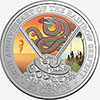
20 cents 2025 - The Rainbow Serpent
First published in 1975, The Rainbow Serpent is a classic Dreamtime story that inspired readers of all ages. Roughsey, a Lardil man from Mornington Island in Queensland, is recognised for his lasting contribution to Australian art and children’s literature. The book won the CBCA Picture Book of the Year Award in 1976 and remains in print today.
By CAA | Tuesday, August 19, 2025

Australian Steam Giants and Steam Trains 50 Cents Coins
In 2025, the Mint presented Steam Giants – Australian Rail Heritage. The coins gather together some of the largest steam locomotives to run in Australia and tells the dramatic story of progress that led to railways across the country racing to build bigger and more powerful machines.
By CAA | Monday, August 18, 2025
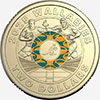
2 dollars 2025 - Rugby, Wallabies and Wallaroos
In the lead-up to two major events in international rugby — the British and Irish Lions Tour and the Women's Rugby World Cup — the Royal Australian Mint, in partnership with rebel, presented new coins celebrating the Wallabies and Wallaroos.
By CAA | Saturday, July 19, 2025
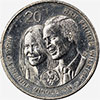
Prince William and Catherine Middleton Royal Wedding Coins
The Royal Australian Mint, in keeping with the tradition of celebrating milestones of the Royal Family, released in 2010 an official royal engagement coins for Prince William and Miss Catherine Middleton. The Royal Wedding Coin design, featuring a portrait of the couple, was released in the coming weeks leading up to the wedding.
By AG | Friday, July 11, 2025

30 Years of the Torres Strait Islander Flag
2025 marks 30 years since the Torres Strait Islander Flag was proclaimed an official flag of Australia. To honour the occasion, the Mint presented two $2 coins that pay tribute to the Torres Strait Islander peoples.
By AG | Wednesday, July 2, 2025
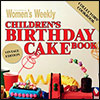
The Australian Women's Weekly Children's Birthday Cake Book coins
The Royal Australian Mint, in partnership with NewsXpress and Are Media, released a coins program on The Australian Women's Weekly Children's Birthday Cake Book. The cover illustration is of the train cake and the cookbook is sometimes referred to as the book with the train on the cover. There are 108 themed cakes appearing in the original edition.
By AG | Thursday, June 12, 2025
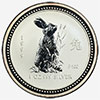
Year of the Rabbit - First Silver Perth Mint Lunar Series
The Perth Mint produced coins for their Lunar Series since 1999. These coins are mainly struck for Chinese coin collectors and bullion buyers. Each lunar series coin features an animal from the Chinese Zodiac. The Year of the Rabbit was the first issue for this Pert Mint Series.
By CAA | Wednesday, June 4, 2025

Moon Landing and Australian Coins
On July 1969 (21 July AEST), Neil Armstrong descended from the Eagle lunar module, taking one small step for man, one giant leap for mankind. Images of the historic moon walk were captured on Earth by Australia's Parkes radio telescope and relayed to Mission Control in Houston for international broadcast. This event was commemorated on several Australian coins.
By CAA | Saturday, May 17, 2025

150th Anniversary of the Burke and Wills Expedition
To commemorate the 150th anniversary of the Burke and Wills expedition, the Royal Australian Mint unveiled new coin designs alongside an exclusive Burke and Wills display at the State Library of Victoria in Melbourne.
By CAA | Monday, May 5, 2025

Centenary of the Quarantine Act 1908
The Royal Australian Mint released a special one dollar coin featuring a detector dog on duty to mark the centenary of Australian Quarantine. The Australian Quarantine and Inspection Service (AQIS) is responsible for protecting Australia's borders from exotic pets and diseases. AQIS also provides import and export inspection to support access to overseas markets.
By CAA | Tuesday, April 15, 2025
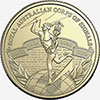
The Royal Australian Corps of Signals Coin
For 100 years, the Royal Australian Corps of Signals has been at the forefront of military communications, ensuring the swift and secure transfer of information across the battlefield and beyond. Since its establishment in 1925, the Corps has played a vital role in every major Australian military mission, pioneering advancements in electronic warfare, cyber operations, and cutting-edge military technology.
By AG | Friday, April 4, 2025

50 cents 2025 - Dorothea Mackellar
A set of 50 cents coins to honour the poems of Dorothea Mackellar was released on March 13, 2025. Born in 1885, Mackellar remains a literary icon, her works reflecting a connection to the landscapes and contrasts of her opal-hearted country. She published poetry and other works between 1908 and 1926 and was active in the Sydney literary scene of the 1930s. In her later years she ceased writing and, suffering poor health. She died in 1968.
By CAA | Wednesday, March 12, 2025
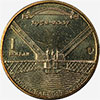
1 dollar 2007 - Sydney Harbour Bridge
In 2007, the Royal Australian Mint marked the 75th Anniversary of the world's largest steel arch bridge with a serie of coins not intended for circulation. The coins include a 2007 $1 Fine Silver Proof Coin and the 2007 $1 mint marked coins, which capture the moment the two halves of the Bridge's arch were joined together.
By CAA | Friday, February 28, 2025
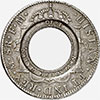
Stolen New South Wales Holey Dollar Returned to Poland
A Holey Dollar coin dating back more than 200 years has been returned to the Government of the Republic of Poland at a ceremony in Canberra. The coin was bought lawfully by a collector in the early 20th century and donated to a museum in Torun, where it became a protected object of Poland. It was then stolen from the museum's collection between 2011 and 2016, sold in 2 auctions in Europe, and made its way to Australia through unlawful export.
By CAA | Friday, February 14, 2025

2006-07 Ashes Series and Australian Coins
The Royal Australian Mint has produced a coin range commemorating this summer's 3 mobile Ashes Series, that includes a $10 gold proof coin, $5 silver proof coin and a $1 uncirculated coin, which feature the famous Ashes urn flanked by the Australian kangaroo and English lion, two iconic symbols of both countries.
By CAA | Sunday, February 2, 2025

A Tribute to Tennis: Australian Open 2025 Coins
To celebrate 120 years of the Australian Open, the Royal Australian Mint teamed up with Australia Post. While visiting a participating Australia Post outlet, a customer have a chance to find an Australian Open coin in change with any cash purchase, while stocks last. Both a men's and women's coin were made.
By CAA | Thursday, January 16, 2025
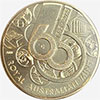
60th anniversary year for Royal Australian Mint
This coin was produced to commemorate the Mint's 60th anniversary celebrations theme. The first one of these coins was set in a piece of marble from taken from the iconic Mint building’s heritage listed floor during recent renovations.
By CAA | Tuesday, January 14, 2025
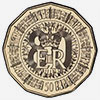
50 cents 2006 - Royal Visit and Royal Birthday
In 2006, the Royal Australian Mint celebrated Queen Elizabeth II's visit to Australia to open the Melbourne Commonwealth Games and Her Majesty's 80th birthday by releasing coins on February 10.
By CAA | Tuesday, January 7, 2025
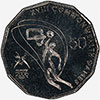
Melbourne 2006 Commonwealth Games Uncirculated Coins
To celebrate the Melbourne 2006 Commonwealth Games, The Royal Australian Mint issued a themed coin collection each event competitions. The 50 cents coins were released progressively up to the commencement of the 2006 Melbourne Commonwealth Games to represent both the spirit of the Games and each of the 16 Commonwealth Games sports.
By CAA | Monday, December 23, 2024

Rare and Limited 2005 Gold Set
The Royal Australian Mint released 24 carat gold coins to create a limited edition 2006 Six Coin Gold Proof Set with designs to commemorating the 60th anniversary of the end of the Second World War on the 20 cents, 50 cents and 1 dollar.
By CAA | Sunday, December 22, 2024
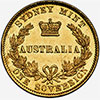
Top 10 Australian certified coins sold in 2024
Here's the list of the most expensive Australian certified coins (mostly gold) sold in 2024 so far.
Prices are in Australian currency.
By CAA | Monday, December 2, 2024
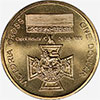
Commemorative 1 dollar 2000 - Victoria Cross
The Royal Australian Mint released on August 7, 2000, a $1 collector coin commemorating the action, a hundred years ago, that resulted in the awarding of Australia's first Victoria Cross (VC). The VC is the highest military award available to members of the Commonwealth military forces. This coin is a tribute to some of Australia's bravest military personnel. The name of every Australian VC recipient was printed on the presentation package housing the coin.
By CAA | Friday, November 15, 2024
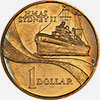
HMAS Sydney II Commemorative Dollar Coins of 2000
The HMAS Sydney II commemorative coins acknowledge the distinguished service during World War II and serves as a memorial to all those who died on November 19, 1941. The $1 2000 coins were chosen to acknowledge a piece of Australia's maritime history. The HMAS Sydney II was a modified Leander Class light cruiser involved in a number of duties throughout the Mediterranean and around Australia.
By CAA | Friday, October 11, 2024

1943 Half Penny and 1977 Two Cent Double Dies
A recent submission at PCGS by an Australian coin dealer included a 1943 Australian Half Penny and 1977 Australian 2 Cents, both featuring obverse doubled die varieties that are now being recognized by PCGS. These double dies were known for some time. For example, a full red uncirculated 2 cents 1977 double die obverse realized $500 plus commission in Downies Auction #315 in October 2013.
By CAA | Wednesday, October 9, 2024
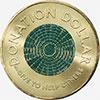
The World's First One Dollar Coin Designed to be Donated
In the lead up to International Day of Charity (September 5th), the Royal Australian Mint released in September 2020 the world's first Donation Dollar: a one dollar coin designed to be donated. According to new research, three in five (57%) Australians say they would be likely to donate this coin if found in their change.
By CAA | Tuesday, October 1, 2024

2024 Bluey 1 Dollar Coin Collection
The Royal Australin Mint produced a 10 coins set and 1 dollar coins in presentation case on the Bluey, a blue Heeler puppy who is characterised by abundance of energy, imagination and curiosity about the world. In June 2024, a 3 coloured ecoins set was also available, with a mintage of 25,000, with additional coin in cards featuring Bluey, Heelers and Grannies.
By CAA | Monday, September 2, 2024

20 cents 2024 - 20th Anniversary of Where is the Green Sheep
The Royal Australian Mint released a 20 cents coin for the 20th Anniversary of Where is the Green Sheep?. The coin was sold in card, in a special edition book and a gold-plated coloured version in a deluxe speical edition book.
By CAA | Saturday, August 24, 2024
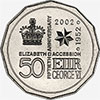
Accession of Queen Elizabeth II - 1952-2002 Commemorative Coins
February 6, 2002 marked the 50th anniversary, or Golden Jubilee, of the Accession. It followed the death of her father King George Vl while the Princess and her husband, Prince Phillip, were in Kenya at the commencement of a tour of the British Commonwealth. This tour, which was to include Australia and New Zealand, was being undertaken on behalf of the King who was gravely ill at the time.
By CAA | Thursday, August 22, 2024

2024 Change of Monarch Year Sets
To commemorate the transformation of Australian coins obverses of the last 70 years, the Royal Canadian Mint issued 2024 proof and uncirculated sets with different portraits: Queen Elizabeth II by Mary Gillick, Arnold Machin, Raphael Maklouf, Ian Rank-Broadley and Jody Clark appear on five of the coins while the new effigy of His Majesty King Charles III by Daniel Thorne appears on the sixth.
By CAA | Wednesday, July 17, 2024

50 cents 2003 - Coronation
Royal Australian Mint's commemorated the 50th Anniversary of Queen Elizabeth II Coronation on two 50 cents coins. Designer Peter Soobik, from Orange, New South Wales, included on the reverse, the Australia's Federation Star, the Southern Cross and sprigs of wattle in his design.
By CAA | Monday, July 15, 2024

1 dollar 2004 - Eureka Stockade
In 2004, the Royal Australian Mint released special dollar coins to commemorate the 150th anniversary of Eureka Stockade. The design for this $1 represents the uprising of the gold miners at Ballarat. Eureka is widely viewed as the most dramatic event experienced on Australian soil in the 19th century. The event, which took place on Sunday December 3, is seen by many Australians as the rise of democracy in this country and the concept of a 'fair go'.
By CAA | Thursday, July 11, 2024
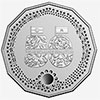
50 cents 2024 - 50 years of NAIDOC
The Royal Australian Mint released a new coin in celebration of the 50th anniversary of the National Aboriginal and Islanders Day Observance Committee (NAIDOC). It was unveiled during a civic reception in the Queen Adelaide room at the Adelaide Town Hall. The Right Honourable Lord Mayor of Adelaide, Dr Jane Lomax-Smith welcomed more than 50 guests including members of the National NAIDOC Committee, NAIDOC South Australia Committee and the Kaurna Yerta Aboriginal Corporation.
By CAA | Tuesday, July 9, 2024

The 1999 Masterpieces Silver Coins
In 1999, a set named Coins of the 20th Century: Memories, limited to 15 000 sets was released to illustrate the popularity of classic pre-decimal designs. In fine silver, the reverse designs were chosen to reflect an important time in Australian history.
By CAA | Tuesday, June 25, 2024

Sir Donald Bradman on Australian Coins
Sir Donald Bradman, died in his Adelaide home on February 25, 2001, at the age of 92. In 52 Test matches from 1928 to 1948, The Don scored 6,996 runs at an average of 99.94. He was a batsman without peer, a highly respected cricket administrator, and a gentleman both on and off the field.
By CAA | Thursday, June 20, 2024

Commemorating Army Centenary - 1 dollar 2001
One March 5, 2001, Lieutenant General Peter Cosgrove showed a 1 dollar coin commemorating the Army's 100th birthday, at the Royal Australian Mint in Canberra. This coin was produced to raise awareness of the bravery and sacrifices of the Army's servicemen and women over the last century.
By CAA | Monday, June 17, 2024
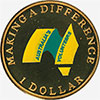
2003 Australia's Volunteers Coins
In November 2002, the Royal Australia Mint releases 3 commemorative circulation coins on Australia's Volunteers. These coins were also part of the Royal Australian Mint's 2003 collector's Six Coin Set (Proof and Uncirculated finishes).
By CAA | Saturday, June 8, 2024
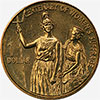
1 dollar 2003 - Women's Suffrage
In December 2003, Australia celebrated the centenary of most women's first opportunity to exercise their right to vote and stand in federal elections with the release of a $1 coin commemorating women's suffrage.
By CAA | Sunday, April 14, 2024

1 dollar 2008 - Centenary of Scouting
On February 22, 2008, Senator Nick Sherry, Minister for Superannuation and Corporate Law, joined with former Governor-General William Deane, National President of Scouts Australia and Mr John Ravenhall, Chief Commissioner of Scouts Australia launched a new 1-dollar coin to mark the centenary of scouting in Australia.
By CAA | Tuesday, April 9, 2024
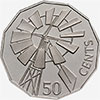
Year of the Outback - 50 cents and 1 dollar 2002
Two coins specifically commemorate the Outback theme. The $1 coin depicts the official Year of the Outback logo, whilst the 50c coin design features the wanes of a windmill. The coins were also produced for circulation.
By CAA | Wednesday, March 27, 2024

1 dollar 2001 - International Year of the Volunteers
To celebrate the International Year of the Volunteers, the Federal Government has authorised the release of a $1 circulating coin featuring the Logo of the International Year.
By CAA | Wednesday, March 20, 2024

20 cents 2010 - Australian Taxation Office
On February 3, 2010, the Royal Australian Mint announced the production of a circulating commemorative 20 cent coin to mark the Centenary of the Australian Taxation Office. The 100th birthday occured on November 11 and celebrations on November 12.
By CAA | Tuesday, February 27, 2024

50 cents 2004 and 2005 - Student designs
In 2004 and 2005, two primary school student coin design competitions created by the Royal Australian Mint occured.
By CAA | Saturday, January 20, 2024
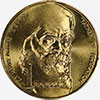
1 dollar 1996 - Sir Henry Parkes
This circulating coin was issued to commemore the centenary of the Constitutional Conventions that led to Federation and the role of Sir Henry Parkes, widely acknowledged as the Father of Federation.
By CAA | Tuesday, January 16, 2024
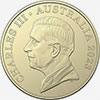
King Charles III on Australian Coins
The Albanese Government released on October 5 the effigy of King Charles III which will start appearing on circulating coins produced by the Royal Australian Mint in 2024.
By CAA | Friday, December 29, 2023
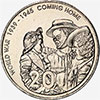
20 cents 2005 - End of World War II
This coin was issued to commemorate the 60th anniversary of the end of World War II. The reverse design was inspired by a photograph in the Australian War Memorial collection of a soldier returning home to his family.
By CAA | Thursday, December 21, 2023
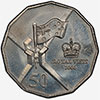
50 cents 2000 - Royal Visit
On the eve of the Queen's 13th visit to Australia in early 2000, a different portrait on the obverse on this coin, by Vladimir Gottwald, had Royal permission to be used exclusively for this issue. The reverse shows an Australian flag and the Royal crown.
By CAA | Friday, December 15, 2023
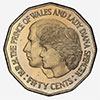
50 cents 1981 - Royal Wedding
This coin was issued to commemorate the wedding of HRH the Prince of Wales (King Charles III) and Lady Diana Spencer. It tooks place on Wednesday, 29 July 1981, at St Paul's Cathedral the traditional site of royal weddings, because St Paul's offered more seating and permitted a longer procession through London. The groom was the heir apparent to the British throne, and the bride was a member of the Spencer family.
By CAA | Tuesday, November 28, 2023
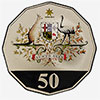
20 and 50 cents 2001 - Centenary of Federation
To celebrate the 100th anniversary of Federation, the Royal Australian Mint issued coins for each Australian state and territory with a reverse design represented by the coat of arms (50 cents) and other symbols and emblems. The reverse designs on the twenty cents were made by students who were the winners of the Royal Australian Mint's student design competition for their state. This was a national competition for primary and secondary school students to design a coin to represent their state or territory.
By CAA | Wednesday, November 22, 2023
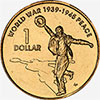
1 dollar 2005 - End of WWII
This coin was issued to commemorate the 60th anniversary of the end of World War II (1939 to 1945). The reverse design was inspired by the Dancing Man a Sydney citizen.
By CAA | Saturday, November 11, 2023

Top 10 Australian certified coins sold in 2023
This year, most expensive and spectacular coins were sold on January 9, 2023, at Heritage Auctions. Here's the list of the most expensive Australian certified coins that sold in 2023 so far.
By CAA | Wednesday, November 8, 2023
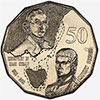
50 cents 1998 - Bass and Flinders
Bass and Flinders were the explorers who proved that Tasmania (Van Diemen's Land) was an island, separated from the mainland of Australia. The 50 cents 1998 circulating coin was released to commemorate the 200th anniversary of the 1798 voyage of Bass and Flinders.
By CAA | Thursday, October 19, 2023
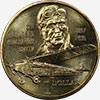
1 dollar 1997 - Charles Kingsford Smith
Sir Charles Edward Kingsford Smith was born on February 9, 1897. He is known as World's Greatest Pioneering Aviatior. He piloted the first transpacific flight and the first flight between Australia and New Zealand. To commemorate the centenary of Sir Charles Kingsford Smith's birth, the Royal Australian Mint produced a special dollar coin in 1997.
By CAA | Monday, October 2, 2023

2023 Centenary of Vegemite 2 Dollars Coins
Royal Australian Mint commemorated the 100th anniversary of Vegemite, thick, dark brown Australian food spread made from leftover brewers' yeast extract with various vegetable and spice additives, with 3 different 2 dollars coins only available at Woolworths.
By CAA | Wednesday, June 28, 2023

Die clash possibilities on Australian coins
To help you to identify die clash on Australian coins.
By CAA | Saturday, April 29, 2023
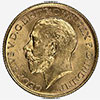
Most valuable and rare Australian sovereigns
Two and five pounds and other Australian gold coins were intentionally excluded from this list. Only Half-sovereigns and Sovereigns coins with circulation finish are included, except some proofs, patterns and specimens that are added at the end of the list.
By CAA | Wednesday, January 18, 2023

1852 Adelaide Assay Office Ingots
The ingots were not intended as general issue but for banks to hold as backing for their notes. The Act fixed the price of gold at £3-11s an ounce, 9 shillings more than was then being paid in the Victorian goldfields.
By CAA | Monday, January 16, 2023

Coin Anatomy
Like many other specialized hobbies, it's important to learn basic collecting coins terminology, including the parts of a coin. You can find more definitions in the glossary.
By CAA | Monday, January 9, 2023
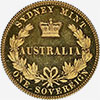
Top 10 Australian certified coins sold in 2022
Several unique and very rare sovereign coins were sold in May 2022 at the Central States World Coins & Ancient Coins Auction and mark this list.
By CAA | Tuesday, November 22, 2022

Queen Elizabeth II on circulating Australian Coins and Banknotes
Queen Elizabeth II died on September 8, 2022 at Balmoral Castle in Scotland, her summer retreat. She was 96. Since opening in 1965, the Royal Australian Mint has produced over 15 billion decimal coins bearing the effigy of Her Majesty Queen Elizabeth II.
By CAA | Wednesday, September 14, 2022

Port Phillip Kangaroo Office Pattern
No one is sure exactly how many Port Phillip pieces remain in existence. What actually occurred during the 3 years that the Kangaroo Office operated is unclear and mainly conjecture. When he finally gave up and sold his equipment to Thomas Stokes, Taylor is believed to have ordered Morgan Brown to take the dies for the gold pieces and sink them out in the bay in deep water.
By CAA | Thursday, September 1, 2022

Poppy: Australian Mint vs Canadian Mint
Late 2017, the Canadian Mint sued the Royal Australian Mint for using a patended printing method on coins without permission. The demand: Australia's 500,000 commemorative $2 coins ($2 million in cash), in circulation since 2012, either be turned over to Canada or destroyed under supervision.
By CAA | Friday, July 15, 2022

2 dollars 2022 - Frontline Workers
The Royal Australian Mint released a new circulating coloured 2 dollars to honour the Australia's Frontline Workers related to the last 2 years of the global pandemic event. The reverse features 12 Frontline Workers including doctor, policeman, researcher, teacher and grocer. 2 millions of this coin were made and released.
By CAA | Tuesday, April 12, 2022
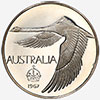
Swan Goose 1967 Meszaros Dollar
In 1967, a Goose or Swan 1-dollar unofficial coin was issued. The idea came from the Australian Coin Review magazine who ran a contest. Readers could create a design to the magazine and the winning one was submitted to the Australian government. The winner, Andor Meszaros, designed a reverse with a Swan, Australia 1967 and his initials. It is often categorized as a modern fantasy or an unofficial pattern dollar.
By CAA | Thursday, March 17, 2022
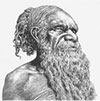
List of commemorative $2 coins from 2012 to 2021
To replace the $2 banknote last printed in 1988, the Royal Australian Mint launched the $2 coin the same year. Cost considerations, durability issues, reduced cost of producing Australia's currency and this change proved a cost-saver for some businesses by reducing the need to unfold, sort, and count $2 bills. This denomination has since been used for several commemorative designs starting in 2012 with the well know Poppy coins. The following list includes all 2012 to 2021 commemorative coins issued for circulation.
By CAA | Thursday, January 27, 2022

New Zealand pre-decimal coins varieties
Here's the list of most popular, recognized and accepted varieties of the New Zealand pre-decimal coins period.
By CAA | Thursday, December 9, 2021
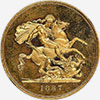
Top 10 Australian certified coins sold in 2021
Including the sale of a near-million dollar coin, here's the list of most expensive Australian certified coins that sold this year so far.
By CAA | Saturday, November 20, 2021

Coins from 1966 - Varietes explained
To replace pre-decimal coins circulating in Australia at the time, Stuart Devlin was chosen to produce designs based on australian wildlife representing the denomination, the new Royal Australian Mint was built in Canberra and opened on February 22. The first official decimal circulating coins were produced at the Canberra, London, Perth and Melbourne mints and were released on February 14, 1966, but with some variances on the reverse from one facility to the other.
By CAA | Wednesday, September 1, 2021

The Perth Mint - Brief history
The Perth Mint is owned by the Government of Australia. The foundation stone was laid in 1896 in it officially established on June 20, 1899. To the discovery of rich gold deposits in Coolgardie, Kalgoorlie and Murchison areas of the colony, the Perth Mint, official bullion mint, was growing rapidly.
By CAA | Wednesday, April 14, 2021
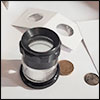
Selling your Australian coins
You have inherited of a collection, you no longer collect, you need money for essential life expenses, you want to sell a part of your collection to buy other numismatic products... Whatever the reason, this 3-steps guide was created to help you sell your coins and get the most out of them.
By CAA | Wednesday, April 7, 2021
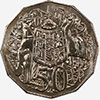
50 cents 1969 - Yarralumla PNC
In 1969, the Nuphll Associates Ltd of Christchurch New Zealand wanted to create The Yarra or Yarralumla, which was a postal numismatic cover (NPC). Because of the the amendment of the Currency Act September, Nuphil asked the Royal Australian Mint for around 2,000 50-cents coins just before the main production began.
By CAA | Monday, March 8, 2021
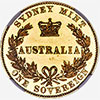
Most expensive Australian certified coins sold in 2020
Marked by the special sale of The Caranett Collection of Sovereigns by Heritage Auctions last summer, a lot of rare Australian gold coins characterize this list. Because of the restrictions and limitations on social gatherings around the country, most auctions were online exclusively, without any attendance at physical shows. Nevertheless, the rising prices for precious metals attracted and animated the Australian coins market.
By CAA | Thursday, November 12, 2020

1930 Penny - King of Australian Coins
Even if no 1930 penny were ordered, at the end of 1929, the Mint made the dies for a 1930 penny and struck a few of them. The most famous of all the Australian Commonwealth circulating coins, the 1930 pre-decimal penny, was minted at around 3,000 examples for circulation and 6 in proof finish. Mostly because of the Great Depression which began in October 1929, there was no need for that coin. The 1929 and a small number of 1930 pennies were released into circulation at the same time in 1929.
By CAA | Monday, October 12, 2020
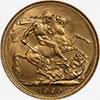
1920 Sydney Gold Sovereign - Rarest Sovereign of Australia
Because of the rising price of gold (127s 4d per ounce) after World War I, the Royal Mint suspended the production of the sovereign. The mint branch in Sydney, Australia already started to produce some of them. 360,000 is the official minting of the 1920 Sydney Gold Sovereign, but only four circulating examples are known, one of them is part of the Royal Australian Mint Collection in Canberra, and 1 specimen.
By CAA | Tuesday, October 6, 2020

Circulation vs Proof Australian coins
Circulation coins are generally intended for circulation or in Royal Australian Mint regular sets. Planchets for the production of proof coins were polished before struck and the field of Proof coins wear a cameo aspect.
By CAA | Thursday, September 24, 2020

New Zealand 2 cents 1967 Mule with Bahamas Obverse
First New Zealand decimal mule was put in circulation in 1967 and was a two cent coin minted with the obverse of the Bahamian five cent coin. Its reverse featured two kowhai flowers, considered emblematic of New Zealand. The image was designed by Reginald George James Berry, who designed the reverses for all coins introduced that year.
By Lightw4re | Monday, August 3, 2020

New Zealand rarest and most valuable pre-decimal circulating coins
Because we did the Top 10 most valuable and rare pre-decimal australian circulating coins, here's some of the most rarest and most valuable New Zealand pre-decimal circulating coins.
By CAA | Monday, July 13, 2020

Top 10 most known and desirable Australian modern errors and varieties
Even if most decimal australian coins aren't worth much, some errors and varieties were discovered over time and are collected by many people, which makes these often rare. Here's the top 8 most known and desirable australian modern errors and varieties sorted by denomination and date.
By CAA | Friday, February 14, 2020

Top 10 most valuable and rare pre-decimal Australian circulating coins
Gold and sovereign coins were intentionally excluded from this list since they will have their own top 10. Here's the top 10 most rare and valuable pre-decimal australian circulating coins sorted by denomination and date.
By CAA | Thursday, January 9, 2020

Heaton & Sons Mint, Birmingham, England
Heaton and Sons is one of the longest running and most prolific private mints in the world. The company began as a family business in Birmingham, then a booming metal working centre, pioneering the mass production techniques of the industrial revolution. In 1794 Ralph Heaton I established a brassfounding business in Slaney Street, Birmingham.
By Museums Victoria | Friday, November 15, 2019

Halfpenny 1916 Mule - Rarest and most valuable Australian half-penny coin
Considered the rarest and most valuable australian halfpenny, approximatly 10 examples of the 1916 mule are known and all have been pulled from circulation in Australia. While the Calcutta Mint was striking the Indian quarter annas and the Australia half penny 1916 coins, intentionally or not, obverse dies from both coins were paired creating the mule. The finds occurring decades after the original issue are met with skepticism by dealers and collectors across Australia and often assign them as fake.
By CAA | Wednesday, November 6, 2019

The Great Aussie Coin Hunt - A to Z
In a joint effort, the Royal Australian Mint and Australia Post joined to release thousands of $1 coins marked to celebrate iconic things of Australia for each letter in the alphabet. Officially called The Great Aussie Coin Hunt, Nicole Sheffield, Australia Post Executive General Manager Community and Consumer, said a coin hunt is great way to reminisce about life in Australia.
By CAA | Tuesday, October 1, 2019
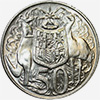
Decimal 1966 half dollar - The silver 50-cents coin
In 1966, around 36,000,000 fifty cent coins were produced at the Canberra Mint exclusively. The production of this round highest-denomination coin stopped when silver price on the market got up by around 80% in a few months. We know that the mint melted down a large amount of them early in 1966 and still recalled a lot of them each year since for melting/profit purposes.
By CAA | Monday, September 9, 2019
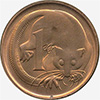
Wildlife designs on the decimal coinage
The idea of a decimal currency system really began in 1958. Prime Minister Robert Menzies was elected promising to investigate its possibilities. New designs were needed for the 1, 2, 5, 10 , 20 and 50 cents denomations. The Governement wanted unique australian themes as well as artistic reverse designs. With the help of a group of selected people, Stuart Devlin was chosen to produce designs based on australian wildlife with big numeral numbers representing the denomination.
By CAA | Thursday, September 5, 2019

The Sheldon scale
The Sheldon scale was first presented in 1949 as a way to grade United States cents, but it was only chose by the American Numismatic Association in the 1970s for all US coins. Used by all third party grading companies, it is a numerical grading system (1 to 70) instead of a word grading system like the adjectival standard system used, for example, by the ANDA.
By CAA | Sunday, August 4, 2019

Defining moments: Decimal currency
The decision to change from the Australian pound (with its awkward shillings and pence) to a decimal currency – the Australian dollar – had been a pragmatic, economic one. Yet decimalisation became an opportunity for Australia to assert itself as an increasingly self-assured and forward-thinking country.
By National Museum Australia | Sunday, November 4, 2018

Defining moments: Holey dollar
The economy of the colony of New South Wales was plagued by a lack of currency during its early years. Governor Lachlan Macquarie attempted to remedy this by importing 40,000 silver Spanish eight-reale pieces.
By National Museum Australia | Sunday, November 4, 2018
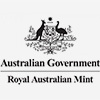
Australian coin history - Timeline
Discover some of the most important events of the australian currency history.
By Royal Australian Mint | Thursday, June 1, 2017

Journey to an Australian Currency
Australia has a unique currency history. From the pre-settlement trading practices of our Indigenous population, to the currency chaos of early settlement where coins from all over the world were used to buy and sell goods, to the British Parliament's declaration that only British currency could be used here. It certainly has been an interesting journey.
By Royal Australian Mint | Saturday, February 25, 2017
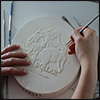
The Minting Process
Design, dies, blank production, coining circulating coins and collector coins, packaging and delivery. The Minting Process explained by the Royal Australian Mint.
By Royal Australian Mint | Monday, April 11, 2016
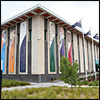
Investigating Australian Coins
The Royal Australian Mint is responsible for producing Australia's circulating coins. It is astonishing to think that every single coin, in the pockets and purses of millions of Australians, was made in a quiet Canberra suburb.
By Royal Australian Mint | Tuesday, March 1, 2016
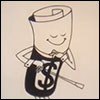
The history of coins in New Zealand
In early 1840, Captain William Hobson, RN, the first Governor of New Zealand, extended British laws to New Zealand. This meant that certain sections of the Imperial Coinage Act, 1816 (UK) became relevant to the new colony. This allowed for the standard gold, silver and bronze British coins to circulate freely in New Zealand alongside the existing variety of foreign coins.
By Reserve Bank of New Zealand | Monday, February 1, 2016

Grading Coins
A great deal of subjectivity surrounds the 'art' of establishing a coin's grade or condition. Invariably, the seller will err on the higher side while the buyer will find any number of blemishes, hairlines or weak spots to lower the grade. To bring some degree of 'science' or objectivity to this process, standard classifications and descriptions have been established.
By AG | Sunday, January 30, 2011
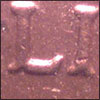
2 cent - Errors and Varieties
The following content comes from the Ian Hartshorn personnal website, which not longer exist since 2010. To keep this information available to the public and for a perpetuity reason, we reproduced it here.
By Ian Hartshorn | Monday, April 19, 2010

5 cent - Errors and Varieties
The following content comes from the Ian Hartshorn personnal website, which not longer exist since 2010. To keep this information available to the public and for a perpetuity reason, we reproduced it here.
By Ian Hartshorn | Monday, April 19, 2010
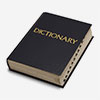
Variety and Error Glossary
The following content comes from the Ian Hartshorn personnal website, which not longer exist since 2010. To keep this information available to the public and for a perpetuity reason, we reproduced it here.
By Ian Hartshorn | Monday, April 19, 2010
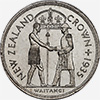
The New Zealand Waitangi Crown of 1935
The crown piece of 1935, popularly known as the Waitangi Crown because of its reverse design and exergue inscription, occupies a special place in the numismatic history of New Zealand. As a work of art, it is surely less startling than the British Silver Jubilee crown of the same year by the same designer, Percy Metcalfe, which depicts a bareheaded St George on a clockwork horse vanquishing a very angular wounded dragon.
By Mark Stocker | Friday, January 1, 2010

Coin Grading Guide
One of those most difficult, yet paramount concerns for the coin collector is grading. To the collector this will help him find the best coin of his desired type for his collection. To the investor, this would mean he wouldn't need to rely on third party gradings from dealers, and with practice could confidently purchase coins off free markets such as eBay without having to fear finding out the coin has been over-graded two or three years down the track.
By Walter Eigner | Saturday, June 17, 2006

A Short History of Australian Coins
English coins arrived in Australia with the First Fleet in 1788. Selected coinage of India, Spain, Portugal and the Netherlands also became legal tender in New South Wales after a Government proclamation in 1800. The first distinctive Australian coins were the Holey Dollars and Dumps of 1813, which were produced by cutting the centers from Spanish Dollars.
By Richard Goodstein | Sunday, September 25, 2005

Let's look at some Australian Coins
In Australia, the decimal system was brought to the attention of Governor Philip Gidley King in 1803 by visiting French explorer Nicolas Baudin. While a proposed issue of coins for 20, 50, 100 and 1,000 farthings is mentioned in the Official Records of New South Wales, there is no evidence that it was seriously considered.
By Richard Goodstein | Sunday, September 25, 2005

Numismatic Collector Issues
The decimal series has spawned an immense array of collector-orientated material. Proof and Uncirculated Mint sets of Australia's coins have been produced by the Royal Australian Mint in 1966 and every year since 1969. In addition, commemorative issues are released on a regular basis.
By Richard Goodstein | Sunday, September 25, 2005
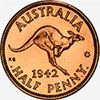
Proof restrikes of the 1942 and 1943 Bombay Mint Penny and Halfpenny
In 1964, coin collectors in Australia and the United States were informed that proof Australian coins were being sold by the Bombay Mint. Sales of these coins were restricted to one set per person and were not available by mail order. Some collectors with friends in Bombay, after a considerable amount of negotiation, managed to obtain the sets.
By AG | Tuesday, November 23, 2004
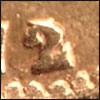
Overdates in Australian Commonwealth Coins
Certainly these coins are not overstrikes. An overstrike is when a fully-minted coin is struck a second time with different dies. This never happened in the history of Australian Commonwealth coinage but the holey dollar was an overstrike, at least a partial one.
By Jon Saxton | Sunday, August 22, 2004
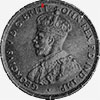
King George V Pennies Obverse Die Varieties
Two obverse die varieties were used throughout the King George V series of Australian pennies between 1911 and 1936. Pennies from 1911 to 1915 were struck at either the Royal Mint, London or at Ralph Heaton & Sons, Birmingham. The London die was used exclusively during these years.
By AG | Monday, November 24, 2003

Early Australian Currency
The settlement of Australia by Europeans began with the departure of the First Fleet from England in 1787. The fleet was bound for Botany Bay, far off in the Southern Hemisphere, with a pathetic cargo of convicts. The east coast of New South Wales was regarded as a convenient dumping ground for convicts, now that the independent Americans had successfully rid themselves of English dominance.
By AG | Monday, September 15, 2003

Proclamation Coins 1800
In a bid to ensure that the coins were not immediately traded back out, Governor King issued a proclamation which effectively doubled their face value for use in trade within the colony and placed sanctions on their import into or export from the colony. He also took the opportunity to set the values at which other silver and gold coins then in circulation were to trade.
By AG | Monday, September 15, 2003

N.S.W. Dump (Fifteen Pence) 1813
Of the 40,000 original Spanish dollars, the records indicate that around 39,910 survived the production process. 190 years later, approximately 1,500 dumps have survived. Of those, less than 1,000 are able to be identified, the balance being worn beyond recognition.
By AG | Monday, September 15, 2003

N.S.W. Holey Dollar (Five Shillings) 1813
Of the 39,910 originally produced, it is estimated that approximately 350 Holey Dollars remain, many of which cannot be identified because details are obliterated. The following table lists 276 known Holey Dollars by their host Spanish 8 Reales (dollar) coin.
By AG | Monday, September 15, 2003

The Gold Rush
To the populace of crime-torn England at the end of the eighteenth century, a 'free passage' to Australia was anything but a voluntary trip. Yet, in fifty years, Englishmen, and people in countries around the world were prepared to offer their life savings for a berth on a ship to get here. The change in attitude was directly attributable to the discovery of gold around Bathurst (New South Wales) and Ballarat (Victoria).
By AG | Monday, September 15, 2003

Australian Half-Sovereign and Sovereign
By the mid-1850's the Government decided that it was about time that an official mint should be set up to convert the plentiful gold stocks into coins of the realm. Adelaide and Melbourne both petitioned for the honour of establishing a mint, but the royal decree went to Sydney.
By AG | Monday, September 15, 2003
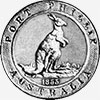
Kangaroo Office Coins
In 1851 Taylor had exhibited a coining press at the Great Exhibition and for his latest adventure had no trouble finding wealthy backers to provide him with a fully supplied ship for his trip to Melbourne. Sailing on a chartered vessel, the Kangaroo, Taylor arrived on 23rd October, 1853. Here, the problems which would ultimately doom the project to failure struck. The wharves at Melbourne had no facilities for manhandling the press dockside in one piece. Many months were lost as the press was stripped down to be moved.
By AG | Monday, September 15, 2003

The First Commonwealth Issues
For nine years after federation had welded the colonies into a nation, Australia continued to exclusively use British coinage. Finally, in 1910, the first distinctive Australian Commonwealth coins, struck at the Royal Mint in London, were introduced. It was a somewhat jinxed start for Australian currency.
By AG | Monday, September 15, 2003

Lost Forever - Where Did They Go?
At one time, mintage figures gave a reasonably accurate assessment of the relative value of a coin. As logic would indicate, coins with low mintages would be worth more that similar coins with mintage figures of many millions. This rule of thumb is no longer as accurate.
By AG | Monday, September 15, 2003
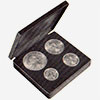
Pre-Decimal Proofs and Patterns
To celebrate the first home striking of Australia's silver coins, the Melbourne Mint issued a collector proof set in 1916. Apart from this, very few proof coins of dates prior to 1920 are known to exist. From 1920 onwards, a limited number were struck each year for presentation to Museums, etc. These are mostly classified as Proof Record Pieces and, not being made available to the public, precious few have found their way into private hands.
By AG | Monday, September 15, 2003

Australian reference gets a ninth edition
When I first started to write for The Australasian Coin & Banknote Magazine, I asked John Mulhall, the editor, which was the best book to get to learn more about Australian coins. He replied there were several he would recommend. John Mulhall then sent me a complementary copy of The pocket Guide to Australian Coins and Banknotes, which was autographed by the autor.
By George Manz | Tuesday, September 24, 2002

Explaining currency: New Zealand's bank notes and coins
We all use currency - bank notes and coins - but what is it really? This section describes what money is, what cash or currency is, how New Zealand's bank notes are designed and made, and the life cycle of a typical bank note. It also looks at the design and security features of our bank notes and coins, and the history of currency in New Zealand.
By Reserve Bank of New Zealand | Wednesday, July 10, 2002

Taxonomic Nomenclature
I have been collecting Australian Commonwealth coinage for some time and I have always been very interested in die varieties. Recently my collection has grown somewhat to the point where it is difficult for me to remember the varieties for any individual denomination and year. Now I want to catalogue my collection and identify each coin with a short but meaningful code.
By Jon Saxton | Monday, June 3, 2002
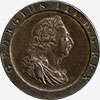
The coinage of the Australian colonies 1788-1826
I am not a historian. Much of the information presented here is gleaned from other sources; only the organisation and some commentary is mine. The early economic history of Australia is a large topic, better dealt with by others. I have concentrated on those aspects of that history which are relevant to numismatics in general and to coinage in particular.
By Jon Saxton | Monday, February 12, 2001
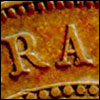
Letter-shape variations in the reverse legend of George V pennies
In his little book, "The 1965 Australian Coin Varieties Catalogue", John Dean describes a particular variation on the reverses of Australian George V pennies. This variation affects shape of the letters forming the legend "COMMONWEALTH OF AUSTRALIA". On some coins the seriffed letters I, H, T, M, L , E, A and R have flat bases whereas on others the bases of the letters are distinctly concave. Dean also mentions this variation on the 1931 florin.
By Jon Saxton | Thursday, February 10, 2000
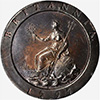
Nineteenth century Australian coinage
At the start of the 19th century there was no country of Australia, nor were there Australian coins. The first colonists and convicts landed in 1788 in New South Wales, the coast of which had been charted by Captain Cook in 1770. By 1800 the population had grown to 6000. Coinage consisted of anything brought by settlers or traders, but the bulk of transactions involved store receipts, private notes and barter.
By John Roberts-Lewis | Tuesday, July 8, 1997



